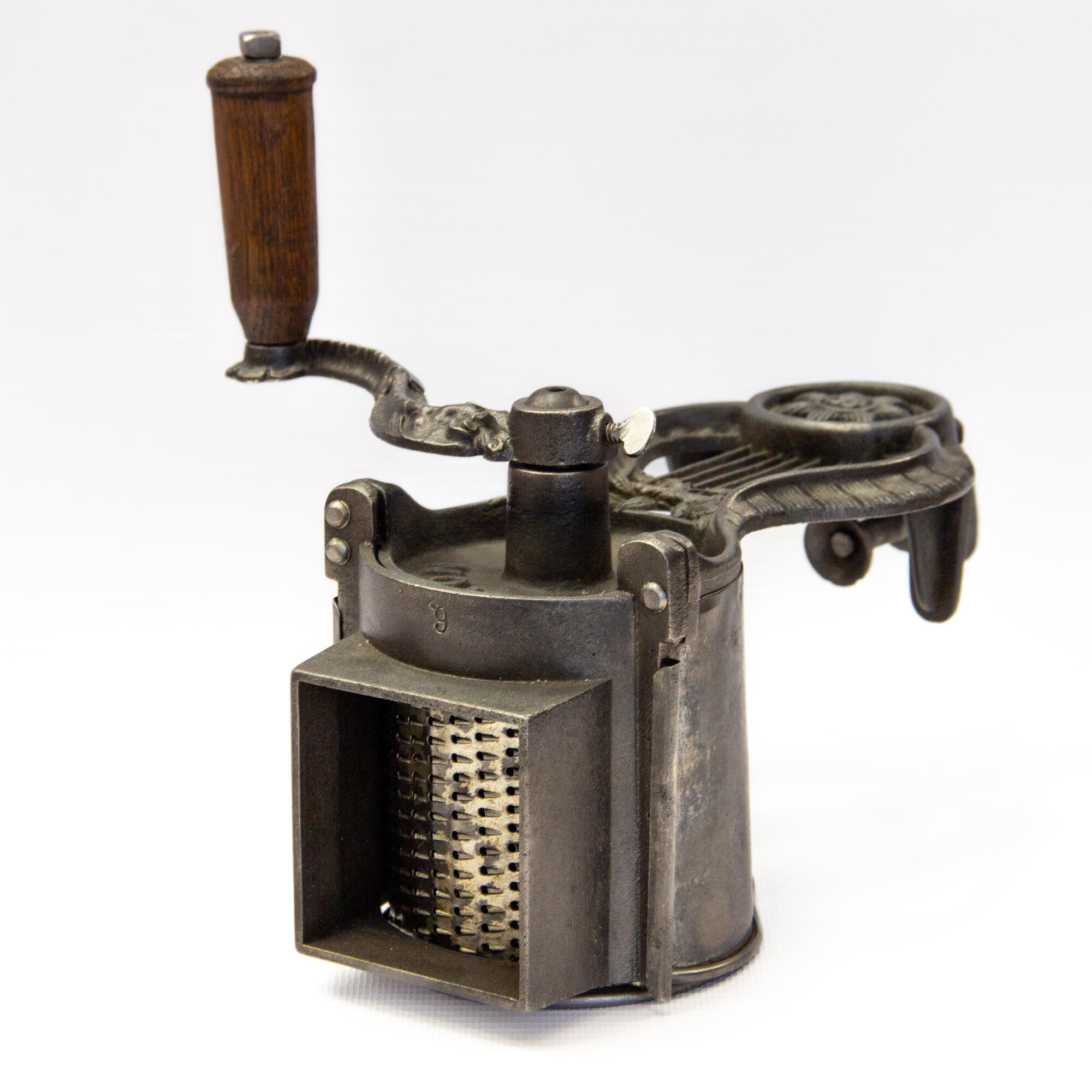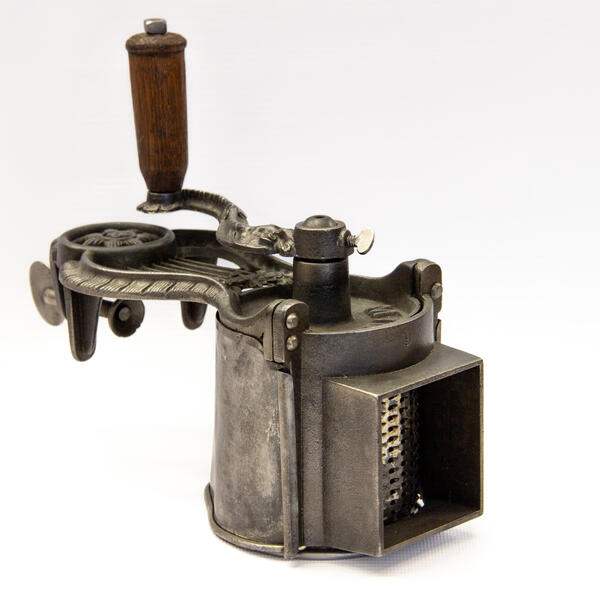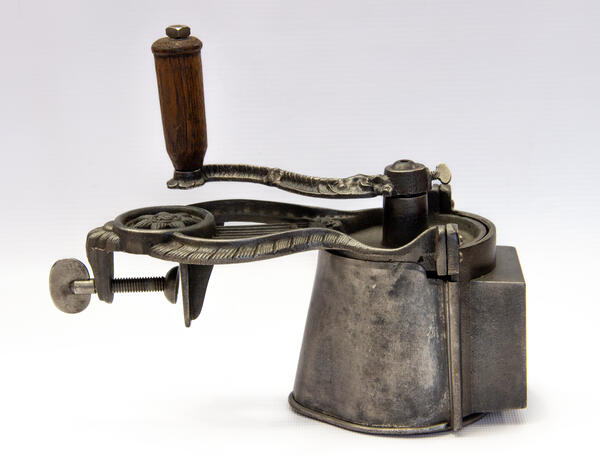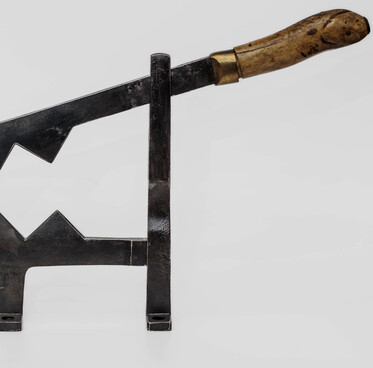The rotational-type manual grater is made of steel, tinplate and wood. It has cast, stamped and turned components. The grater can be assembled and disassembled. It has a cast support, which is screwed to the countertop with a bolt. The support is decorated with a through pattern in the form of a lyre and a convex inscription MIGNON. A cylindrical grater with many round holes and adjacent teeth that act as knives is inserted into a tin drum which has a drain below. A steel receiving hopper is attached to the drum at the top, into which vegetables are placed. The grater is driven by turning the handle. The handle is cast, curved and has the shape of a snake with an open mouth, with a wooden lathed grip. This type of grater was used to grind vegetables and cheese. Potatoes were also often grated for making starch at home.
Archeological finds suggest that graters as tools for grinding root crops existed since antiquity. In the Roman Empire, various food items were ground into puree with a special tool, which consisted of small sharp pebbles fixed to a burnt ceramic base. Naturally abrasive materials, like shark or stingray skin were also used as a tool for grinding root vegetables.
The Frenchman François Boullier is regarded as the creator of the modern kitchen grater. In the 1540s he came up with a metal device with which one could conveniently grind dried cheese to later be used as seasoning or ingredient for a variety of dishes. In the 18th century, new culinary techniques such as deep-frying and sautéing were invented in France. The latter of which involves finely grinding vegetables. That’s when the prototypes of modern graters and vegetable cutters appeared. In the early 20th century, they were perfected in the USA.
In 1901, at the Pan-American Exposition in Buffalo a mechanical grater and vegetable slicer were presented. The inventions were made of metal, with rotary mechanisms. They were fixed to the edge of the table with clamps when they were used. The inventions were quite heavy and bulky, however, they immediately gained popularity, as they mechanized and greatly facilitated the process of chopping foods.





